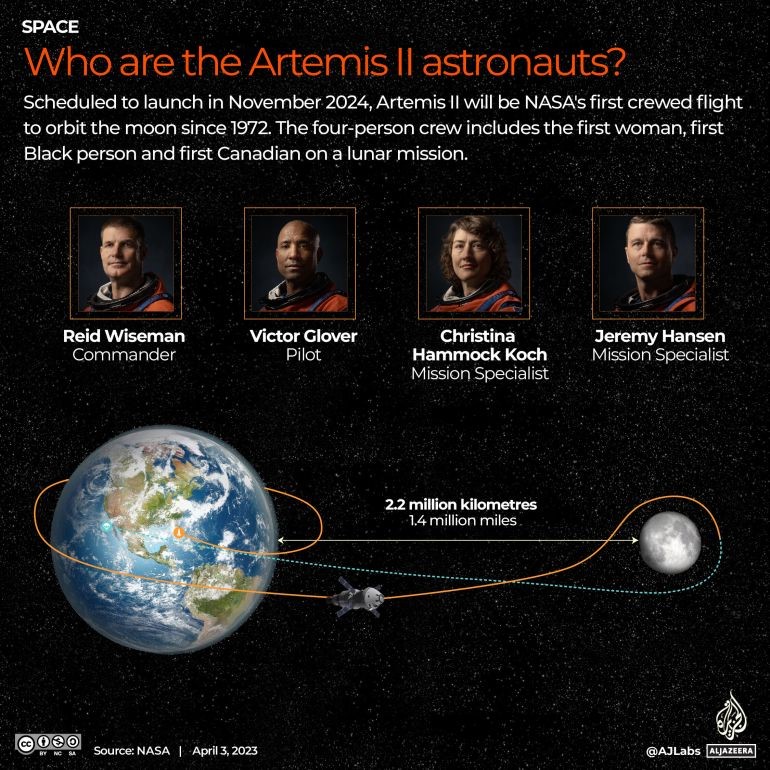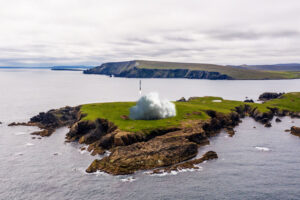First woman on the Moon: From fiction to reality
15th Dec 2022
57 years ago, the whole world watched with bated breath as NASA astronauts Neil Armstrong and Buzz Aldrin walked on the Moon for the first time in human history. Then another ten astronauts visited the Earth’s satellite, and all of them were also males. But has a woman walked on the Moon? Never. But in the 21st century, this omission is going to be corrected.
Why was the Moon mission not entrusted to women, what prevented it, who will be the first woman on the Moon, and when will it happen? Let’s find out.
Why has a woman walked the Moon only in fiction?
Flight into space is a complex process that requires not only large financial investments and thorough technical training but also outstanding human capabilities. NASA selected the best test pilots for its missions, with an engineering background and extensive experience in flying military jets. There were few highly qualified women engineers in the military back in the 70s, and there were no high-class test pilots at all, so the astronaut corps for moon flights was formed exclusively from men.
But there was another reason as well. Prior to 1970, gender discrimination in the choice of profession was quite pronounced in the United States. And while the Soviets were actively sending their women into space, NASA stubbornly believed that a woman in space and especially on the Moon would suffer, her reproductive system would be irreparably harmed, and her weaker physical abilities and moral stability could endanger other crew members and compromise the entire mission. Even the name of the lunar program itself was completely masculine — “Apollo,” so there could be no question of any woman on the Moon.
But gender equality gradually strengthened, the members of the fair sex among the astronauts grew, and each woman proved that she could conquer space on an equal basis with men.
Achievements of women in space
Soviet cosmonaut Valentina Tereshkova paved the way for women in space. It happened on 16th June 1963, two years after the flight of Yuri Gagarin. The USSR claimed to provide equal opportunities to all of its citizens, so Tereshkova came from the common people. However, she had considerable experience in skydiving and parachute jumping, which favourably distinguished her from ordinary people and made her a good candidate for the astronaut corps. Since then, 71 women have been in space. Each flight made its contribution to science, and space industry development and also became an example of women’s endurance, high intelligence, and performance in difficult environments.
Tereshkova has been followed by equally outstanding women such as:
- Sally Ride — the first American woman to fly into space on June 18, 1983 aboard the Challenger spacecraft on the STS-7 mission.
- Svetlana Savitskaya — the second female cosmonaut, but the first woman to conduct an EVA.
- Kathryn Sullivan — the first American woman to walk in outer space.
- Helen Sharman – the first UK representative and the first woman to visit the Russian orbital station “Mir”. Sharman is also known for not being a professional astronaut. She was selected from several thousand ordinary citizens and passed many months of training in the astronaut camp.
- Claudie André-Deshays — the first female astronaut from France to visit the Mir station and later the ISS.
- Elena Kondakova — the first woman to make a long flight. Her mission at the Mir station lasted 169 days.
- Roberta Bondar — a neurologist who became Canada’s first female astronaut in 1992.
Women on the ISS
Has a woman walked on the Moon, well, not yet but they are frequently on the ISS. Moreover, women do not only keep watch on the ISS — they also helped to assemble it in orbit. In December 1998, NASA astronaut Nancy Currie participated in the first assembly mission. She helped connect the American Unity Node 1 module with a Russian Zarya module using the shuttle’s robotic arm.
During the second ISS assembly mission, three women took part: Tamara Elizabeth Jernigan, Ellen Lauri Ochoa, and Julie Payette. Jernigan was the first spacewalker on the ISS. Her task was to install the crane equipment while Ellen Ochoa operated the robotic arm. Julie Payette is Canada’s second female astronaut and the first Canadian to return to the ISS. She returned a few years after her first trip.
During the years of the ISS operation, there were many women in the crews, and three of them — Americans Peggy Whitson, Sunita Williams and Shannon Walker — were crew commanders. On September 28, 2022, Samantha Cristoforetti from Italy became the fourth female ISS commander and the third ESA female astronaut.
The first woman on the Moon – from dreams to action
The contribution of female astronauts to the exploration of space clearly shows that there will be a first woman on the Moon, and she will handle her mission admirably. But when will this dream of flying to the Moon come true? NASA claims that it will happen in this decade.
In 2019, the US announced the official launch of the Artemis 2.0 Moon exploration program. Its goal is to restart human missions to the Moon. Plans include a permanent base for research and engineering work on the surface of the Moon, and in the future, this same Moon base will become a launch pad for flights to Mars.
The Artemis Moon program is divided into several stages. Artemis 1 and 2 includes the creation of a Lunar Gateway in orbit around the Moon, resupply missions, and unmanned ship flights. The first Artemis astronauts will be one man and a woman to walk on the Moon in 2025-2026.
The first woman on the Moon: who is she?
NASA has selected a total of 9 candidates to be the first women on the Moon. They are:
- Kayla Barron, astronaut, US Navy lieutenant commander;
- Christina Koch – record holder in a single space flight among women;
- Nicole A. Mann, an astronaut who is now learning to fly the Boeing CST-100 Starliner;
- Anne McClain, astronaut, aerospace engineer, 204 days in space;
- Jessica Meir, biologist, and astronaut with 205 days of experience in orbit;
- Jasmin Moghbeli, Navy test pilot, H-1 helicopter tester, and astronaut since 2017;
- Kathleen Rubins, astronaut since 2009, biologist, and first female scientist to sequence DNA in space;
- Jessica Watkins, PhD in geology, a scientist on the Curiosity rover mission, astronaut;
- Stephanie Wilson — astronaut since 1996 with three shuttle missions and 42 days in space.
As you can see, all the candidates are more than worthy of their first moon mission, but which one was chosen?
NASA revealed the historic crew for the 2024 Artemis Mission

On April 3, 2023, during an event at Ellington Field near NASA’s Johnson Space Center in Houston, NASA announced the crew members assigned to the Artemis 2 lunar mission in November 2024. It included three Americans and one Canadian: Reid Wiseman (commander), Victor Glover (Pilot), Jeremy Hanssen (the mission specialist), and the first woman on the moon… Christina Koch! The American astronauts were selected from over 40 applicants, and Jeremy Hanssen from 4 Canadian applicants.
The crew is expected to travel over 1.4 million miles around the Moon, marking the closest approach to Earth’s satellite since Apollo 17.
During the mission, astronauts will demonstrate manoeuvres and test life support systems aboard the crewed reusable Orion spacecraft. If the flight goes as normal, NASA will begin preparing the third stage of Artemis, which will include landing on the lunar surface.
Commenting on the nominations, NASA Administrator Bill Nelson, a former astronaut and senator, said in the agency’s statement: “The Artemis II crew represents thousands of people working tirelessly to bring us to the stars. Together, we are ushering in a new era of exploration for a new generation of star sailors and dreams — the Artemis Generation.”
And yet there have been women on the Moon!
Nobody, apart from twelve NASA astronauts, has set foot on the Moon’s surface. But in the movies, it happens all the time. Has a woman walked on the Moon in movies? Yes!
The first one to “land” a woman on the Moon was German filmmaker Fritz Lang in the silent sci-fi film The Woman in the Moon, based on his wife’s novel, in 1929. In this film, Friede, an assistant to the space travel entrepreneur Helios, accompanies him and the company to the Moon in search of gold and stays there.
The sci-fi series For All Mankind, released in 2019, tells an alternative story of space conquest in which the Russians landed on the Moon first. It is the success of a Russian Anastasia Belikova, the first woman on the Moon, that spurs Americans to create their own lunar program. What happened next, you can find out on your own by watching these fascinating space movies. And we will find out what will become of the Artemis Moon program in the coming years. But one thing is certain. The first woman will surely visit the Moon soon!






Thank you for your comment! It will be visible on the site after moderation.